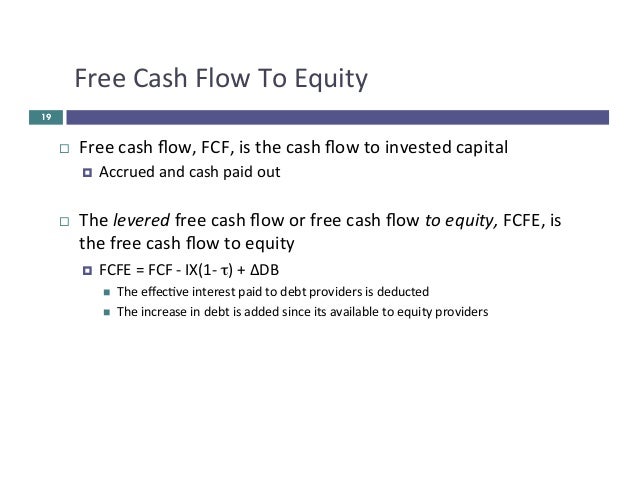
LFCF = EBITDA - change in net working capital - CAPEX - mandatory debt payments They bought all of their equipment for $375,000 in the first year, and they didn't have any capital spending in the next year. The first year's working capital was $90,000, while the second year was $150,000. In their second year, that sum had risen to $350,000. Their EBITDA during the first year was $250,000. They end up owing an average of $15,000 on the loan each month. The owners invested $200,000 of their capital and took another loan of $300,000 when they established their business two years ago. The company, M&M is in the construction business. Working Capital – The overall level of working capital accessible to a business is referred to as this.Ĭapital Expenditures – A firm's spending in fixed assets, such as property, facilities, or machinery, is known as capital expenditures. Mandatory Debt Payments – This is the total amount owed to debtors by a corporation. In short, it's a method of determining a firm's total financial status. Here's a more detailed explanation of what these phrases mean:ĮBITDA (Earnings Before Interest, Taxes, Depreciation, and Amortisation) – Operating profits, taxation, degradation, and accruals. LFCF = EBITDA – Mandatory Debt Payments – Change in Net Working Capital – Capital Expenditures
#Levered cash flow free#
This is how you can calculate levered free cash flow. Levered Free Cash Flow FormulaĮven though you will also need to know a few significant information ahead, calculating leveraged free cash flow is pretty simple. Levered free cash flow is a valuable method to assess the financial position of business investors and increase its sales in relative terms, and it can also be a great predictor of whether or not a business will operate to raise extra capital from its finances. Because "levered" is essentially another word for "loan," "levered" investment returns are those that are free of interest charges. Interest rates and operational costs are examples of such expenses. Levered free cash flow (LFCF) is the earnings left in an income statement after all of its significant and long financial liabilities have been met.

These responsibilities encompass both short-term and long-term requirements, such as:

The amount of money left over after a firm has met all of its recurrent financial commitments are referred to as Levered Free Cash Flow.


 0 kommentar(er)
0 kommentar(er)
